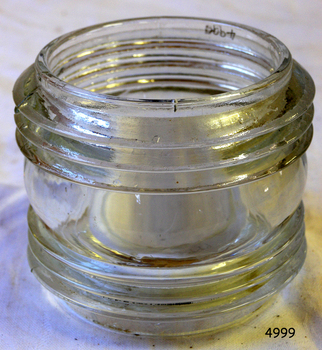Historical information
A Fresnel lens is a type of composite compact lens developed by the French physicist Augustin-Jean Fresnel (1788–1827) for use primarily in lighthouses.
Made from high-quality glass Fresnel lenses were used originally in lighthouses and later for many other applications They were later being used for automobile headlamps, brake, parking, and turn signal lenses, and many other applications. Fresnel lenses used in lighthouses were considered state of the art from the late 19th through to the middle of the 20th century. The subject item is a Fresnel replacement lens used in a ships navigation light. For lighthouses, these lenses have now been replaced with much less expensive and more durable aerobeacons, which themselves often contain plastic Fresnel lenses.
The lens design allows the construction of lenses of large aperture and short focal length without the mass and volume of material that would be required by a lens of conventional design. A Fresnel lens can be made much thinner than a comparable conventional lens, in some cases taking the form of a flat sheet. The simpler dioptric (purely refractive) form of the lens was first proposed by Count Buffon and independently reinvented by Fresnel. The catadioptric form of the lens, entirely invented by Fresnel, has outer elements that use total internal reflection as well as refraction; it can capture more oblique light from a light source making the light visible from greater distances.
Significance
The subject item at this time cannot be associated with a historical event, person or place, provenance is unknown, the item is a replacement for a ships navigation light and it is believed to have been produced before 1950.
Physical description
Fresnel round glass masthead replacement lens for a navigation lamp of a ship.
Inscriptions & markings
None

